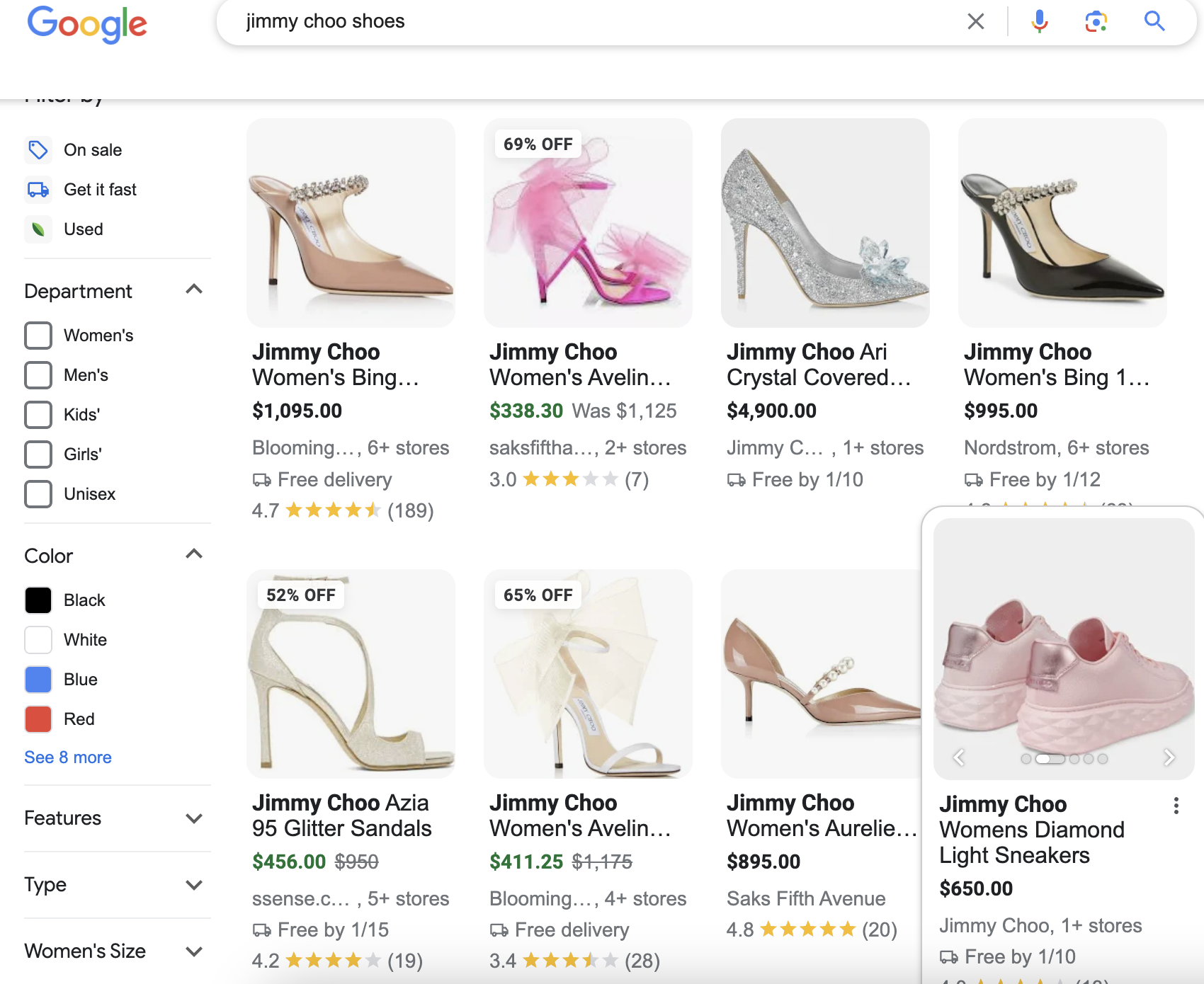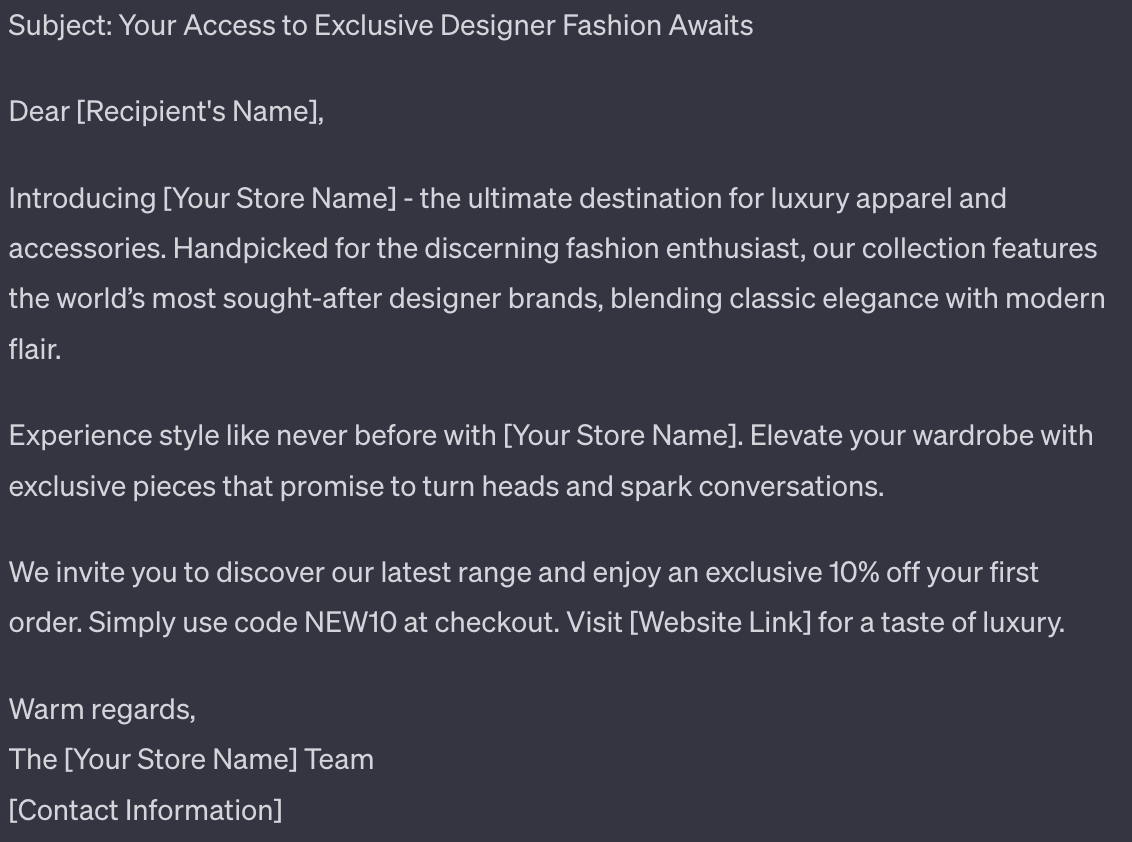5 Brilliant Outbound Marketing Examples for Dropshipping Success
The beauty of outbound marketing lies in its ability to expand your audience reach, drive paid traffic, and leverage diverse channels to engage different demographics.
As a result, up to 62% of marketers have reported finding outbound marketing as quite effective.
However, executing a successful outbound marketing campaign requires an understanding of proven strategies. That's where this article comes in handy.
Today, you'll find the best outbound marketing examples that will show you how different techniques can be used to enhance brand visibility, drive traffic, and boost sales.
:format(webp)/https%3A%2F%2Fbrandsgateway.com%2Fapp%2Fuploads%2F2024%2F06%2Fbanner.jpg)
Looking for a reliable dropshipping or wholesale supplier?
Join us today for top-quality products and unbeatable prices.
What is meant by outbound marketing?
Outbound marketing is a traditional form of marketing that involves reaching out to potential customers through direct and often broad messaging strategies.
It uses methods like cold calling, direct mail, television and radio ads, print advertisements, and telemarketing.
The goal of outbound marketing is to actively push your business’s message and reach as many people as possible.
What are the benefits of using outbound marketing?
Outbound marketing offers several key benefits for dropshipping businesses:
- Expanding your audience reach. Outbound marketing allows you to actively reach out to potential customers, rather than waiting for them to find you. This approach is particularly effective in targeting specific demographics or geographic areas that may not be aware of your brand yet, thereby expanding your market reach and customer base.
- Driving paid traffic. Paid advertising is known to drive fast results. By investing in paid ads on platforms like Google Ads either by yourself or with the help of a Google ads agency, you can quickly generate traffic to your store, leading to immediate sales and customer engagement.
- Diverse channels: Outbound marketing uses a variety of channels like TV, print ads, and direct mail, each appealing to different audience demographics. This diversity allows for a more comprehensive reach, ensuring that your marketing efforts resonate with a broad spectrum of potential customers.
What is the difference between inbound and outbound marketing?
Outbound marketing is often seen as a more aggressive method of generating leads and making sales. Instead of waiting for customers to come to you, this strategy involves actively reaching out to them.
Inbound marketing focuses on creating valuable content that naturally draws people towards your business. Instead of pushing your products or services onto them, you aim to pull them in by providing useful information or solutions.
What are some outbound marketing examples?
1. Paid Online Advertising
One of the most effective outbound marketing strategies for dropshipping stores is paid online advertising. This method allows you to precisely target potential customers and steer traffic directly to your store.
With the variety of online ads available today, including Google shopping ads, Instagram ads, Facebook ads, Pinterest ads, and TikTok ads, you can create campaigns that speak to the very heart of your target audience’s needs and interests.
Why use online paid advertising?
- Specific audience targeting: Advertising platforms offer sophisticated targeting options that let you reach customers based on demographics, interests, behaviors, and even specific keywords they’ve searched for.
- Cost control: Paid advertising allows you to only pay when someone clicks on your ad, giving you control over your advertising budget.
- Quick results: Unlike organic marketing strategies, paid advertising can generate traffic immediately after your ads go live.
- Measurable ROI: Every aspect of paid ad campaigns is measurable, allowing you to optimize for better returns.
Many successful online stores leverage paid online advertising to scale their business.
For instance, stores like Bloomingdale’s, SSENSE, Nordstrom, and Saks Fifth Avenue have been using Google Shopping ads to showcase their products directly in search results.

2. Paid Offline Advertising
In the age of digitalization, it might seem counterintuitive to consider offline advertising as part of your outbound marketing strategies.
However, it’s crucial to understand that a well-rounded marketing approach often involves both online and offline tactics.
This balance ensures that you’re reaching out to all potential customers, not just those active on the internet.
Why use offline paid advertising?
- Broader audience reach: Offline advertising has the power to reach demographics that may not be as active online, such as certain age groups or communities.
- Enhanced trust: Many consumers still trust traditional media more than digital ads. By advertising in reputable magazines, newspapers, or billboards, you increase the credibility of your brand.
- Lasting impact: Physical advertisements, like flyers or direct mail, offer a tangible experience that can leave a more lasting impression compared to digital ads that are quickly scrolled past.
- Local targeting: For dropshipping businesses looking to establish a strong local presence, offline advertising can be highly effective.
3. Cold Email
Cold emails involve reaching out to potential customers or businesses who may not know about your store yet.
The primary purpose of cold emailing is to introduce your business to a wider audience, create awareness, and ultimately drive sales.
Here are a few tips on how to create a cold email:
- Personalization: Address the recipient by their name and personalize the subject lines. Put yourself in their shoes and think about what kind of subject message would make you open the email.
- Brevity: Keep it short and clear. Your email should focus on how your dropshipping store can provide value to your email recipients. Avoid going into too many details about your products or services in the first interaction itself.
- Call-to-action: Don’t leave your recipient wondering what to do next. Include a clear call-to-action (CTA), like an invitation to visit your store or an offer for a special discount for first-time customers.
Why use cold emails?
- They offer a direct line of communication. Unlike other forms of advertising, cold emails allow you to craft personalized messages, allowing you to directly contact your targeted audience.
- They are cost-effective. Cold emails require very little investment, allowing you to reach a large number of recipients with minimal expense.
- They are measurable. Tools and software used in email marketing provide valuable insights through analytics, such as open rates and click-through rates, helping you refine your strategies for better results.
- They can boost credibility. By providing useful information, offering solutions to problems, or sharing valuable content, you can position your brand as an expert in your field, building trust with your audience even before they make their first purchase.
To illustrate, here’s a great ChatGPT prompt you can use to generate great templates and create your own cold emails:
Prompt
I am an owner of an online retail clothing store that sells luxury apparel and accessories. I am looking to find new potential customers interested in buying designer clothing. Create a cold email template that focuses on introducing my business to customers who have never heard of it.
Stick to the following points:
- Craft a compelling and concise subject line that grabs attention and encourages the recipient to open the email.
- Address the recipient by name.
- Introduce my business. Make sure it’s clear who I am and why I’m reaching out.
- Highlight what my store can offer and how it benefits the recipient. Focus on solving a problem or addressing a need they may have.
- Include an engaging CTA.
- Maintain a professional yet friendly tone throughout the email.
- Stick to 100 words.

4. Direct Mail
Direct mail involves sending physical promotional materials, such as flyers or catalogs directly to potential customers through postal services.
Why use direct mail?
- Targeting specific audiences. One significant advantage of direct mail is the ability to target specific demographics or customer purchasing behaviors. Dropshipping stores can meticulously curate their audience, ensuring promotional materials reach those most likely to be interested in their offerings.
- The power of personalization. Adding a personal touch to these campaigns can also boost engagement. In an increasingly digital world, receiving something tangible and personalized can make your dropshipping store stand out from the crowd.
- Driving immediate action. Incorporating promotional offers or incentives in direct mail pieces can be a game-changer. It creates an immediate call to action that encourages recipients to visit your website and make purchases.
5. In-person events
In-person events are live gatherings or meetings where people physically come together in a specific location.
These can range from trade shows and conferences to pop-up shops and networking events.
Why use in-person events?
- Building personal connections: Face-to-face interaction fosters stronger relationships with your potential customers.
- Brand awareness: Physical presence at events like trade shows or pop-up shops raises brand visibility and recognition.
- Direct feedback: You get immediate and direct feedback on your dropshipping products, which is invaluable for improvement and adaptation.
- Networking opportunities: Such events provide opportunities to network with industry professionals, influencers, and potential business allies.
- Building credibility: Your physical presence at reputable events can enhance the credibility and legitimacy of your dropshipping business.
Put these strategies to work today
Don’t hesitate to test all of these outbound marketing examples. With consistent effort and strategic planning, achieving dropshipping success through effective outbound marketing is an attainable goal.
Take note that while outbound marketing can yield great results, it’s equally essential to pair it with other marketing techniques as well.
After all, creating a successful dropshipping business is about striking the right balance across various aspects – making outbound marketing one piece of a large puzzle.
Related articles
Our clients' success stories speak volumes about the impact BrandsGateway has had on their businesses.
View More Articles








:format(webp)/https%3A%2F%2Fbrandsgateway.com%2Fapp%2Fuploads%2F2024%2F07%2FScreenshot_20240618_140550_Gallery.jpg)
:format(webp)/https%3A%2F%2Fbrandsgateway.com%2Fapp%2Fuploads%2F2025%2F04%2Freview-scaled.jpg)
:format(webp)/https%3A%2F%2Fprod-brandsgateway-images-do.s3.fr-par.scw.cloud%2F2019%2F04%2F6-Best-Men%E2%80%99s-Clothing-to-Sell-in-2019.jpg)
:format(webp)/https%3A%2F%2Fprod-brandsgateway-images.s3.fr-par.scw.cloud%2F2022%2F02%2Finstagram-stories-dropshipping-store-c7eaad24-d54.jpg)
:format(webp)/https%3A%2F%2Fbrandsgateway.com%2Fapp%2Fuploads%2F2025%2F03%2Fstartup-costs-scaled.jpg)
:format(webp)/https%3A%2F%2Fbrandsgateway.com%2Fapp%2Fuploads%2F2025%2F03%2Fgiveaway-scaled.jpg)
:format(webp)/https%3A%2F%2Fbrandsgateway.com%2Fapp%2Fuploads%2F2024%2F06%2Fwindow-display.png)
:format(webp)/https%3A%2F%2Fbrandsgateway.com%2Fapp%2Fuploads%2F2025%2F03%2Fniche-store-scaled.jpg)
:format(webp)/https%3A%2F%2Fbrandsgateway.com%2Fapp%2Fuploads%2F2025%2F03%2Fshopify-chargebacks.jpg)